Ricoh Caplio 400G Wide
Review Date: 22nd June 2004
|
Image Quality
All of the sample images in this Review were taken at the highest quality setting of F2048, which gives an average image size of around 1.3Mb.
Noise
There are 4 ISO settings available on the Caplio 400G Wide, which you can select at any time. There is also an Auto setting if you want to let the camera decide the best speed for the current situation. Here are some 100% crops which show the noise levels for each ISO setting:
ISO 125 (100% crop) |
ISO 200 (100% crop) |
 |
 |
ISO 400 (100% crop) |
ISO 800 (100% crop) |
 |
 |
The noise levels look good at ISO 125, with some noise starting to appear at ISO 200. ISO 400 and 800 are very noisy and you would probably want to avoid using these settings unless you had no choice.
Sharpening
Here are two 100% crops which have been Saved as Web - Quality 40 in Photoshop. The right-hand image has had some sharpening applied in Photoshop. The images were shot with the Sharpness set to "Normal". Consequently they are quite sharp straight out of the camera.
Original 100% Crop |
Sharpened 100% Crop |
 |
 |
 |
 |
File Quality
The Caplio 400G Wide has 5 different JPEG quality settings. Here are some 100% crops which show the various file quality settings.
F2048 |
N2048 |
 |
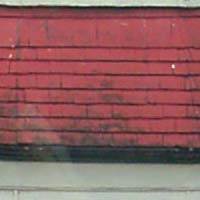 |
F1280 |
N1280 |
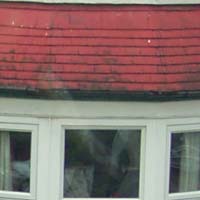 |
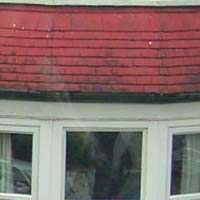 |
N640 |
|
 |
|
Chromatic Aberrations
The Ricoh Caplio 400G Wide suffers from quite excessive chromatic aberrations in bright outdoor conditions where there is high-contrast. There was no sun in the sky when I took the images shown below. Both chimney pots exhibit strong purple fringing on one side.
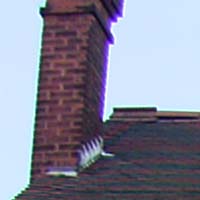 |
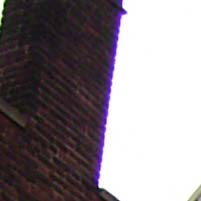 |
Overall Image Quality
The image quality of the Ricoh Caplio 400G Wide is perfectly acceptable, but not outstanding. Its biggest achilles heel seems to be purple fringing, with more in evidence than other digital cameras that I've reviewed. The images aren't too noisy at the lower ISO speeds, but you will only want to use ISO 400 and 800 in an emergency. At the default sharpening setting of "Normal" the images are fairly sharp and won't require too much sharpening during post-processing. All-in-all an adequate but rather underwhelming performance.
|
